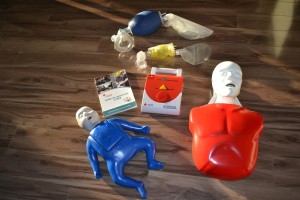Smoke inhalation is a serious medical problem that is often associated 
Smoke inhalation is the most common cause of death in many cases of fires. It is a serious problem associated with chemical and thermal burns. Regardless of the fire source, smoke generated by any combustible material contains many poisonous substances. Modern buildings and furnishings are made of plastics and other synthetic materials that have the potential of releasing toxic gases when they are overheated or are burned. Aside from being dangerous for the lungs, substances found in smoke can burn the skin, injure the airway, irritate the eyes, and even lead to death (respiratory arrest and/or cardiac arrest).
When responding in cases of fire, you can expect to see irritations of the eyes and injury to the airways due to the smoke. Your top priority is to ensure patent airway and adequate breathing. Usually, victims of smoke inhalation will have difficulty breathing or have bouts of cough. Some victims will have breath that smells “smoky” or the odor of the burned chemicals. Others may have black residue in the mouth or nose. In case of irritations to the skin and eyes, you can simply flood the affected part with water.
First aid actions taken for smoke inhalation include:
- Call 911 or your local emergency phone number. Contact your fire safety department if not yet available.
- Remove the victim from the burn site and move to a safe area.
- Check airway, breathing and circulation. Be ready to provide life support measures such as CPR and rescue breathing, as needed.
- If available, administer high concentration of oxygen. Use of humidifier and nonrebreather mask is preferred. These are advanced first aid skills that can be learned through workplace approved training courses such as advanced life support or oxygen administration course.
- Check for possible spinal injuries and any other illness or injury requiring immediate care.
- Check for shock and provide care for shock. Conscious
victims are able to breathe well when they are in semi-seated position. - Stay alert for change in consciousness or behavior. Some
victims may become violent or irritable as they recover from theeffects of smoke. The contents of the smoke can have unpredictable
effects on the brain. - Continue monitoring the victim while waiting for help or transporting the victim.
Some cases of smoke inhalation do not appear serious. This is because the effects of certain toxic gases can be delayed. As much as possible, a person who has been exposed to toxic gases should be seen a healthcare professional for further evaluation.
